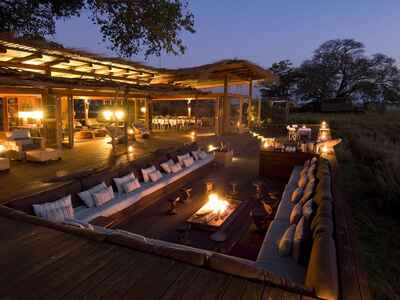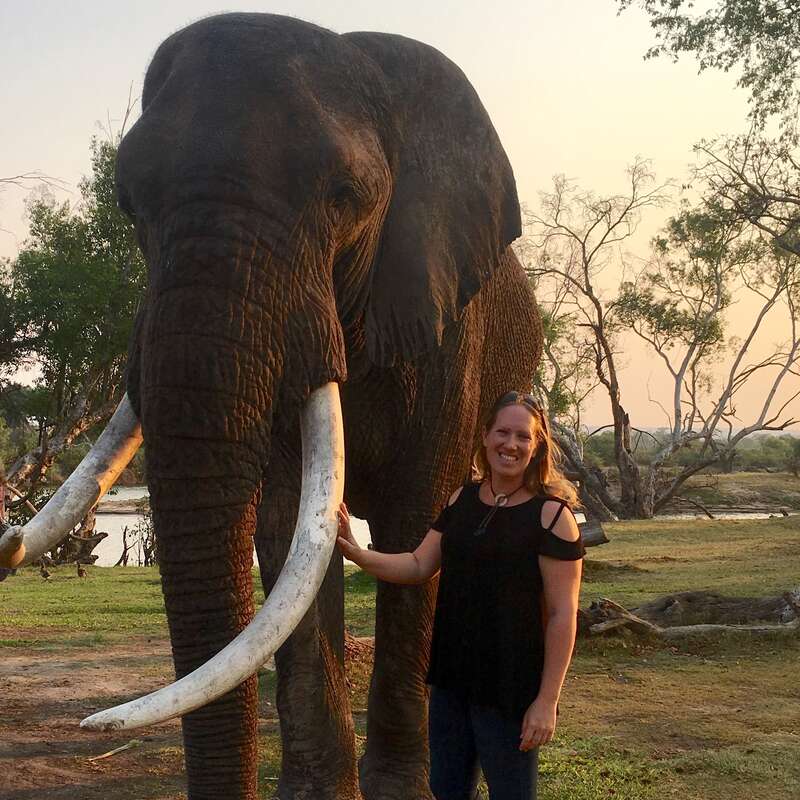About Shumba Camp
Situated on Kafue National Park's Busanga Plains, Shumba Camp was originally a basic bushcamp run by Busanga Trails.
We've known this camp
since 1995, when we first visited ... although it's changed out of all recognition since then. In 2007 it was almost completely rebuilt by its new owners, Wilderness Safaris, and reopened as one of their 'premier' (high-spec) safari camps.
Shumba's a smart camp in a very good location. The food and service we had were very good – but be aware that whilst the game sightings can be great, they're far from guaranteed.
Accommodation
6 tented rooms
Children
Best for older children; 12+
Open
June to October
Activities

4WD Safari

Birdwatching

Night drive
Traveller reviews of Shumba Camp
14 real, un-edited reviews from Expert Africa's travellers.
Arrived 11 Oct 2023, 3 nights
"Shumba Camp review"
Overall rating: Excellent
Arrived 7 Oct 2019, 4 nights
"Shumba and Kafue wowed"
Overall rating: Excellent
Arrived 2 Oct 2017, 3 nights
"Shumba Camp review"
Overall rating: Excellent
Arrived 23 Oct 2014, 4 nights
"Very good camp, friendly, comfortable,"
Overall rating: Excellent
Arrived 4 Sep 2014, 3 nights
"Shumba Camp review"
Overall rating: Excellent
Arrived 16 Oct 2012, 3 nights
"Luxurious Shumba"
Overall rating: Excellent
Arrived 4 Aug 2012, 3 nights
"Shumba Camp review"
Overall rating: Excellent
Arrived 2 Jul 2012, 4 nights
"Shumba Camp Review"
Overall rating: Excellent
Arrived 18 Aug 2009, 3 nights
"Shumba - Out of this world!"
Overall rating: Excellent
Arrived 17 Jul 2008, 3 nights
"Luxury in the Wilds at Shumba Camp"
Overall rating: Excellent
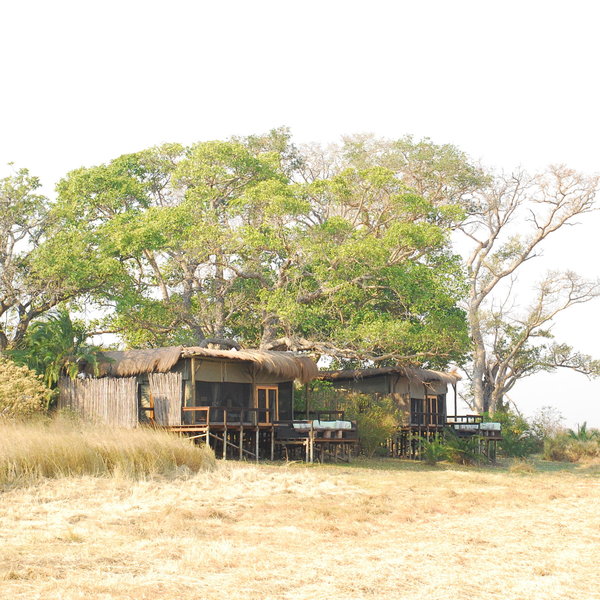
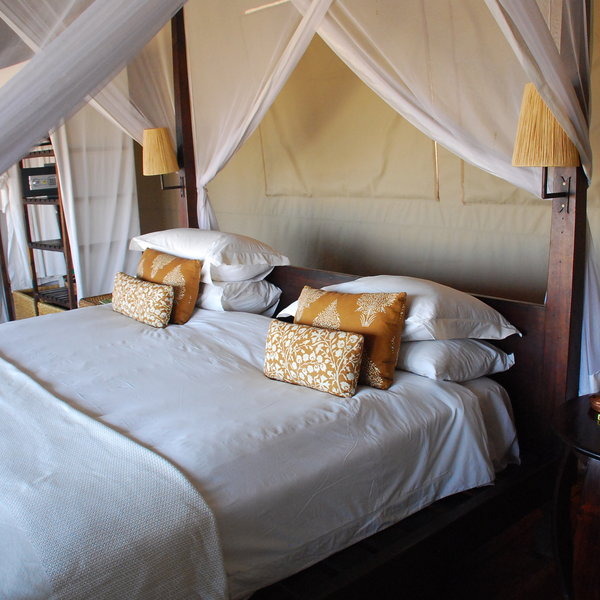
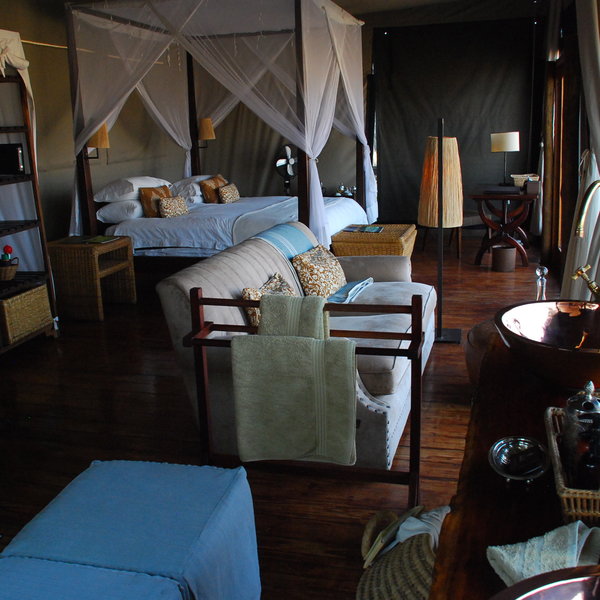
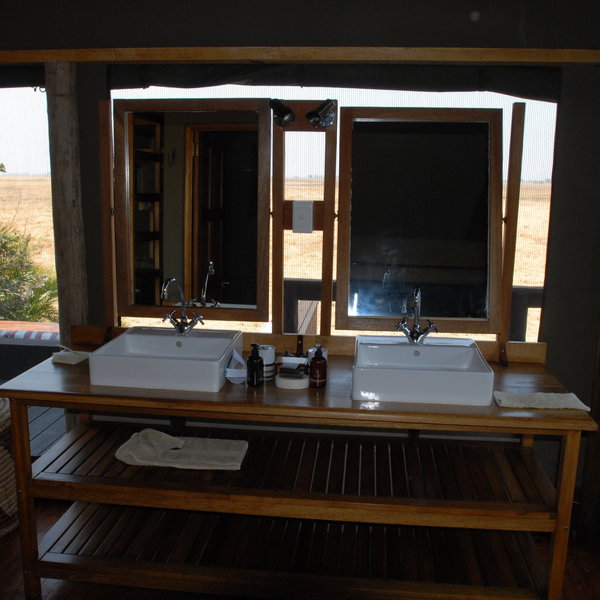
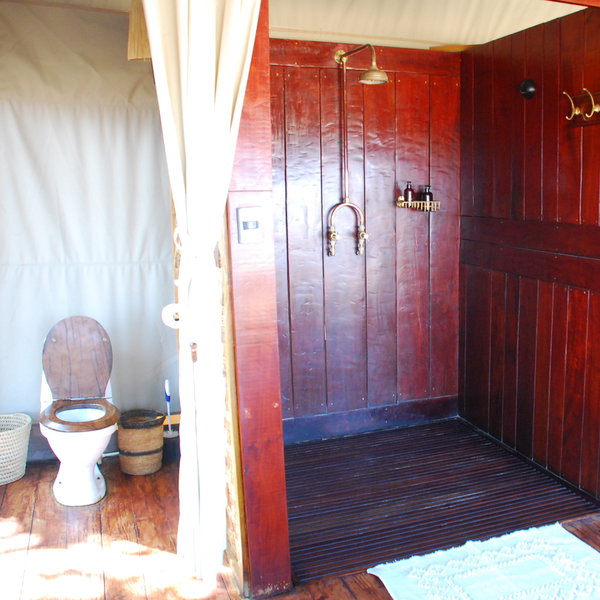
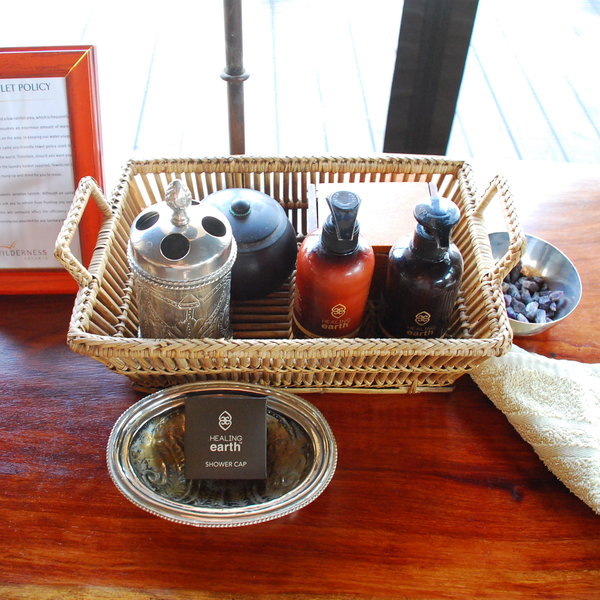
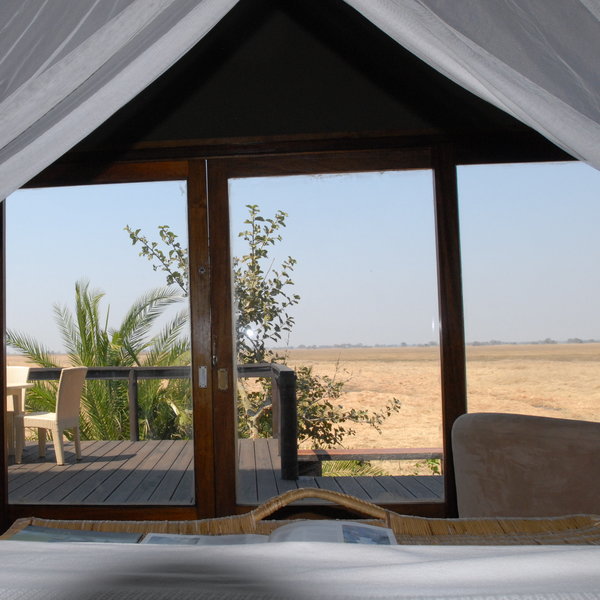
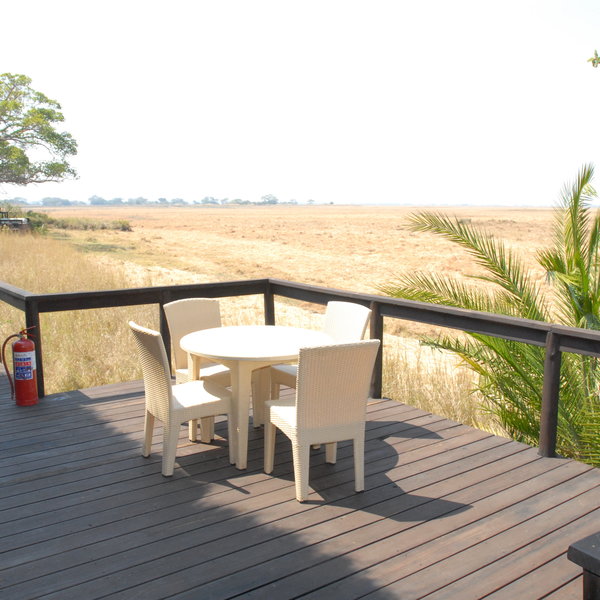
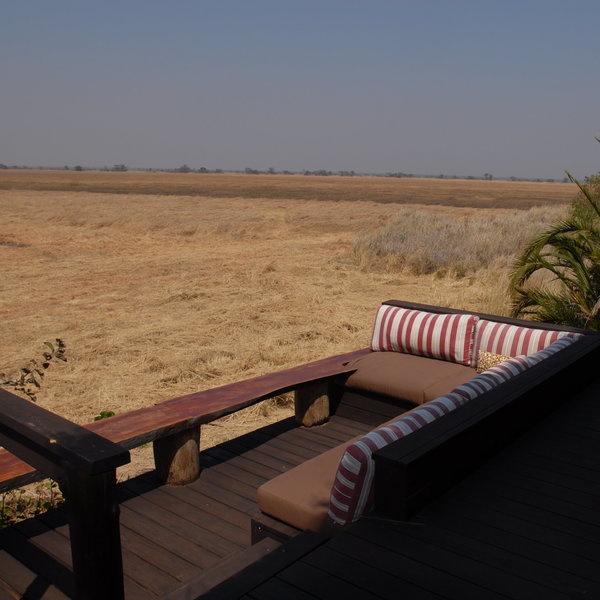
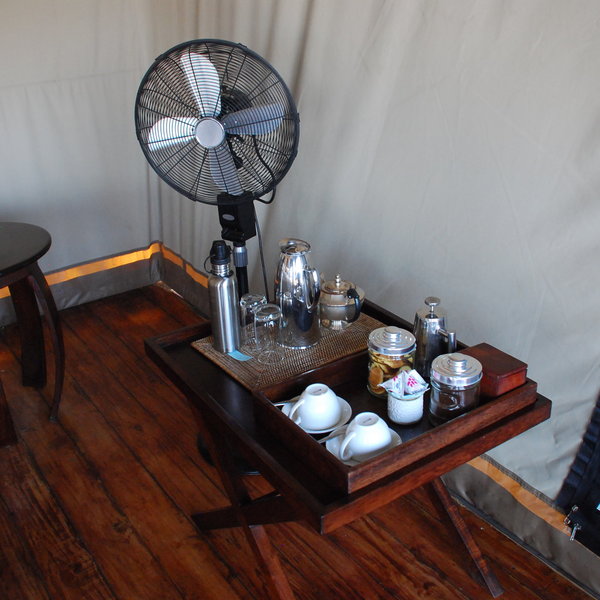
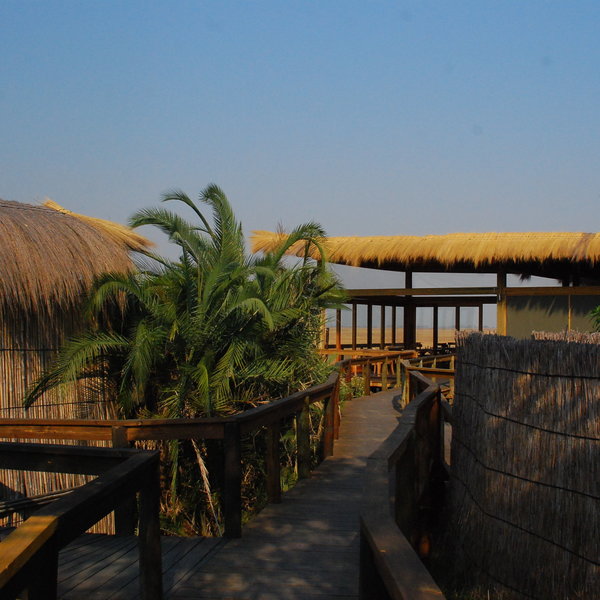
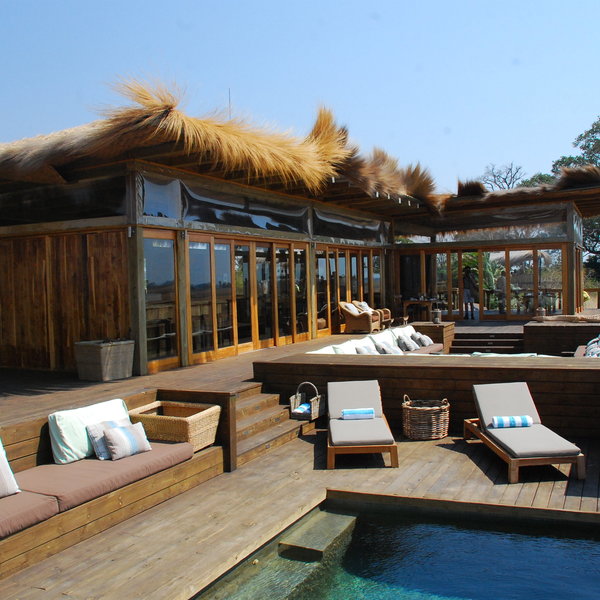
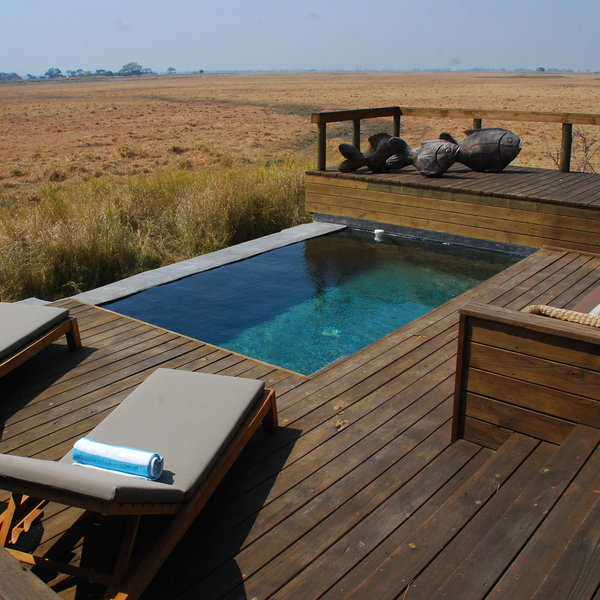
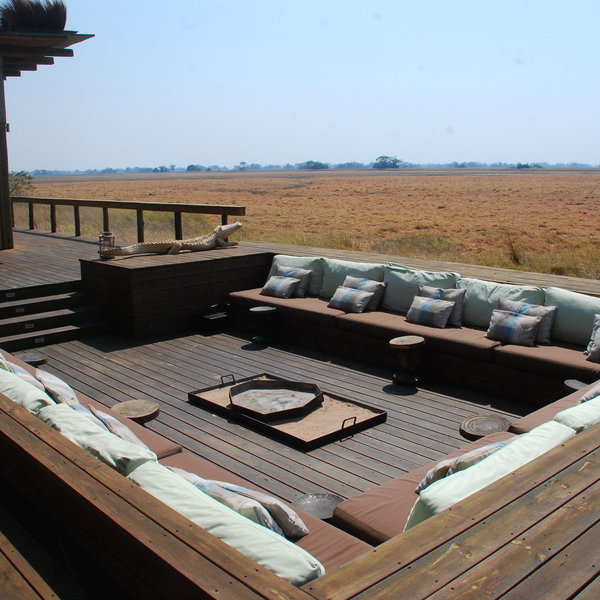
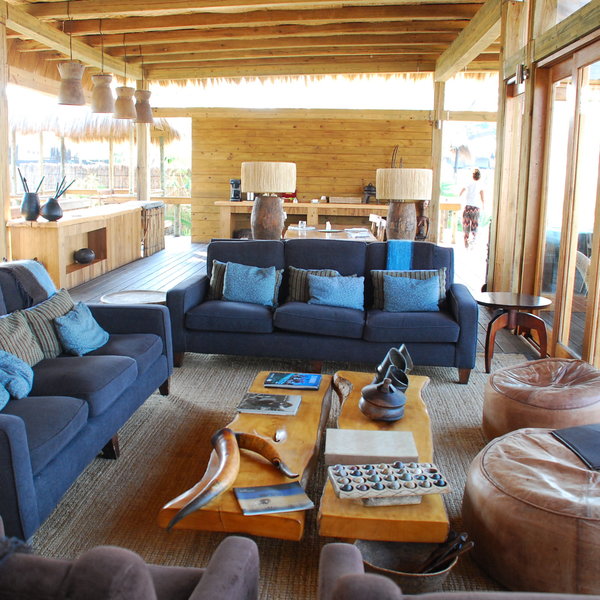
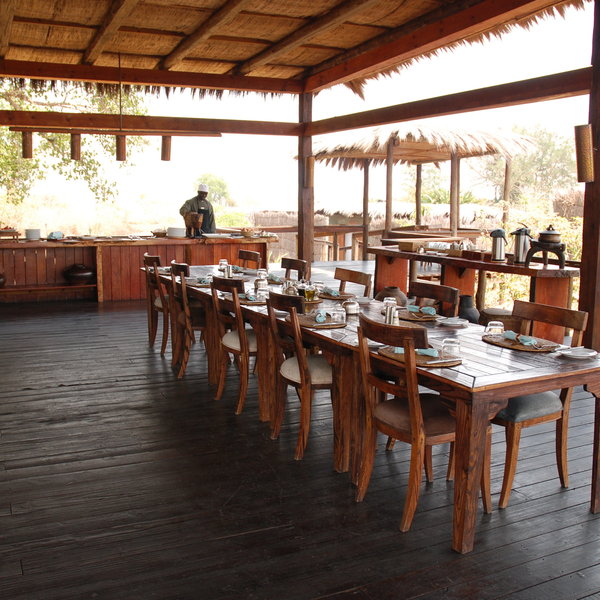
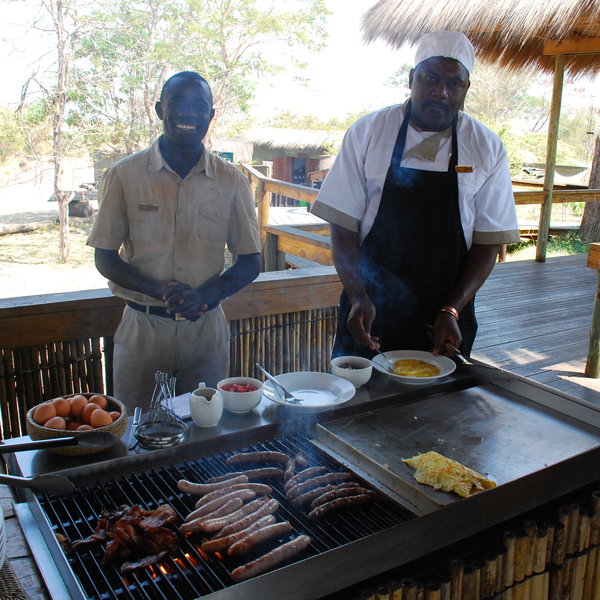
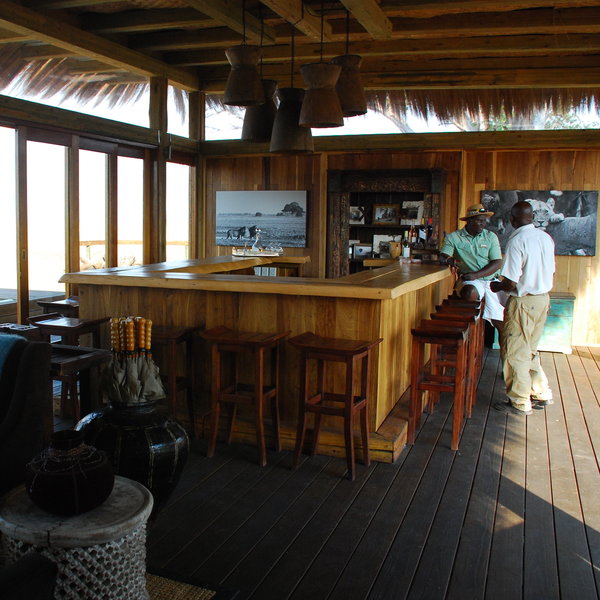
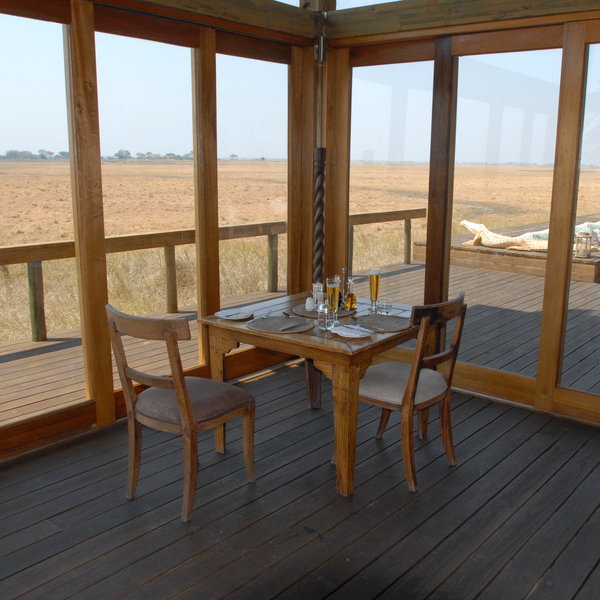
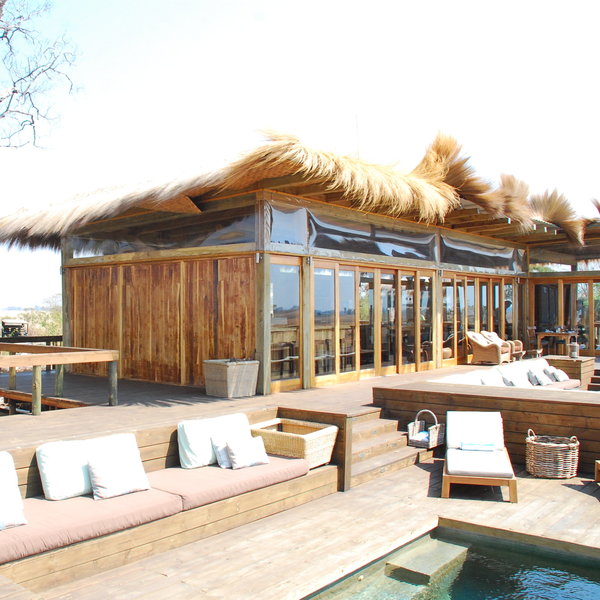
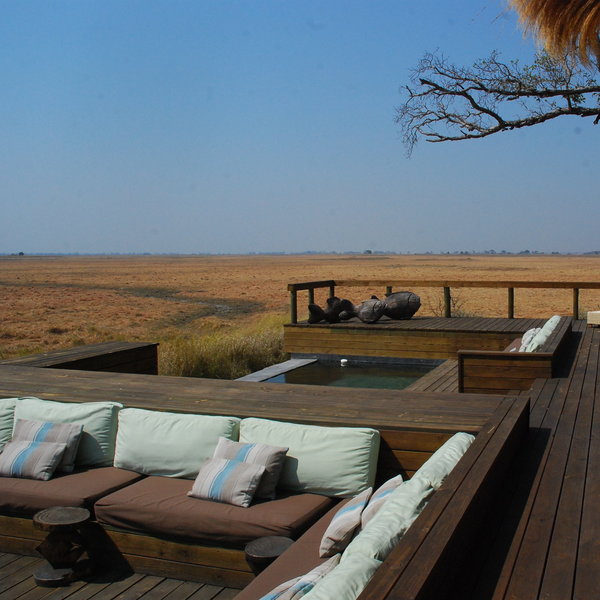
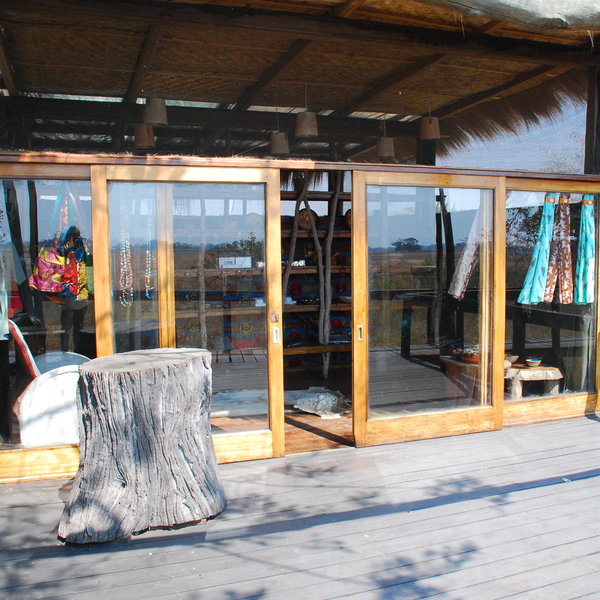
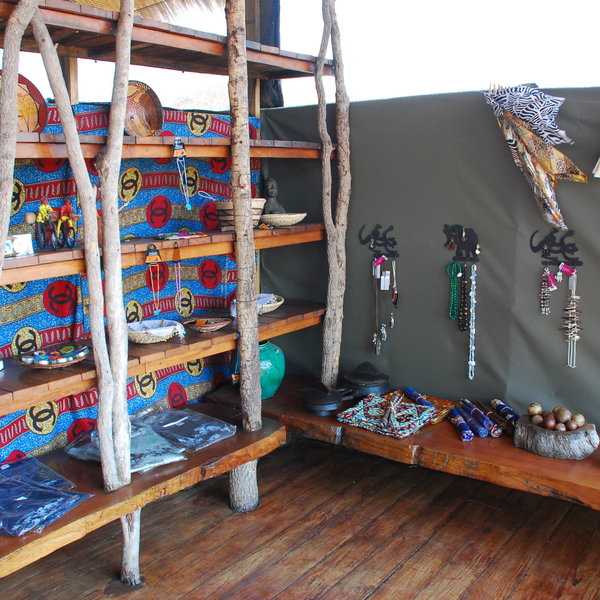
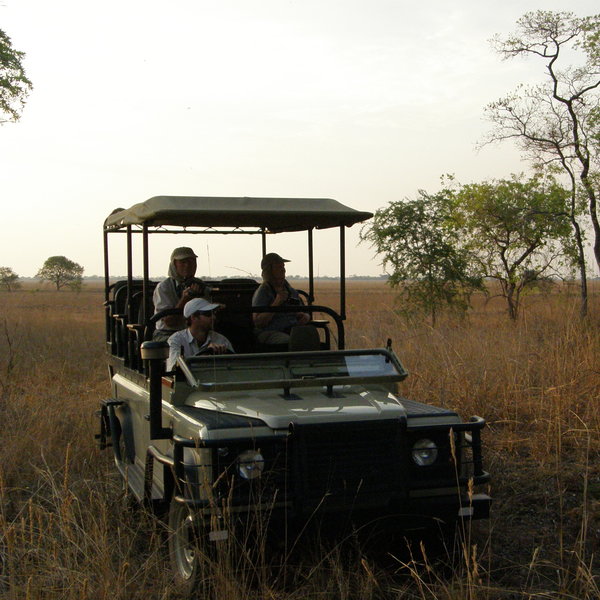
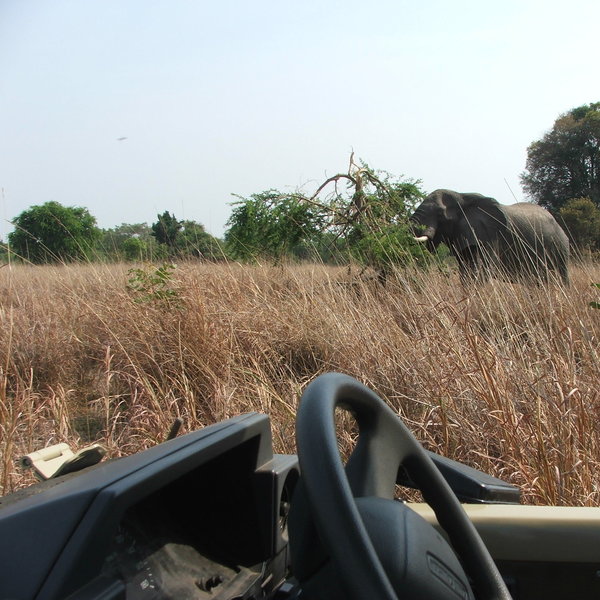
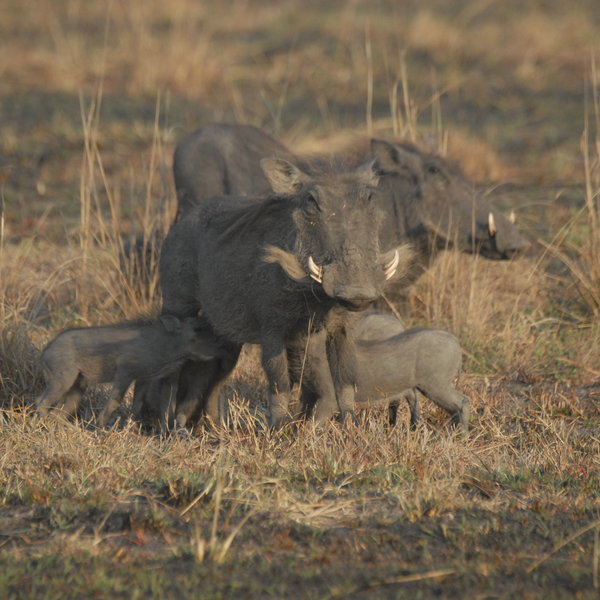
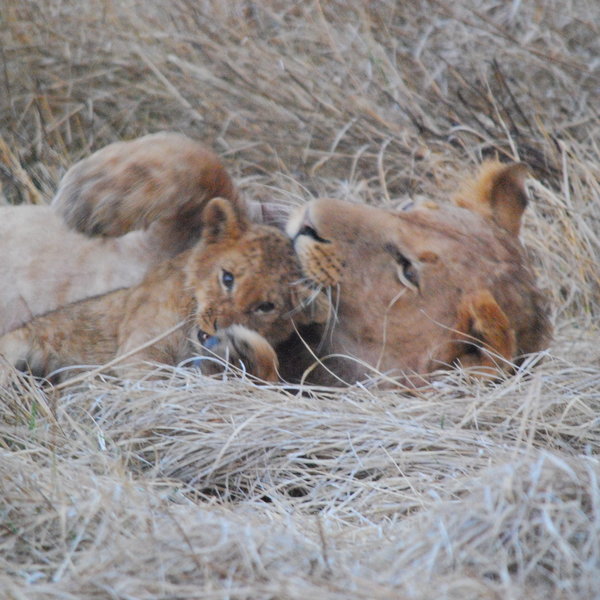
Expert Africa's gallery
When we travel we take lots of photos ourselves to give you a real and un-edited view of the safaris. See our 60 pictures of Shumba Camp to get the candid view.
View galleryShumba Camp: Our full report
Situated on Kafue National Park's Busanga Plains, Shumba Camp was originally a basic bushcamp run by Busanga Trails.
We've known this camp
since 1995, when we first visited ... although it's changed out of all recognition since then. In 2007 it was almost completely rebuilt by its new owners, Wilderness Safaris, and reopened as one of their 'premier' (high-spec) safari camps.
The surrounding terrain might be better compared to Serengeti's open plains than any of Zambia's usual bush landscape, which makes the Busanga Plains a worthwhile and contrasting inclusion on any safari to this country.
Standing on an island of large, majestic fig trees, Shumba overlooks the floodplains in all directions. Built high off the ground and linked by wooden walkways, it is quite spread out, yet well camouflaged, with grass roofs helping it to blend into its surroundings. From various vantage points around the camp you can often see antelope, typically puku and red lechwe, grazing the lush grasses below.
Shumba Camp has six spacious tented rooms, including one larger room that can be used as a family unit. Each is a substantial wood-and-canvas structure built up on a raised platform about 2m off the ground. Every room has two large queen-sized beds under a mosquito net and a settee or armchairs face the front, where canvas walls can be rolled up for an uninterrupted view of the plains and the antelope grazing below. The en-suite bathrooms at Shumba can be curtained off from the bedroom although both the toilet and a large indoor walk-in shower have curtain dividers of their own. Each room also has its own outdoor shower with a view.
The central area at Shumba is also elevated, built around three giant fig trees and positioned to give a great view of the sunrise, yet largely shaded during the hotter afternoons. A well-stocked bar, comfortable lounge with a small reference library and dining area are all under cover in the main building. Folding glass doors slide back to give this area a very open feel but can be closed in times of windy or wet weather. There are several places to relax around the vast, split-level wooden deck, whose lower level incorporates a sunken area with cushioned bench seating around a campfire, and a pool surrounded by loungers.
Shumba is owned and run by Wilderness Safaris, and it is in their top category of camp in terms of style. The rooms and communal areas are certainly very spacious, though on our most recent visit in 2022 we noticed that they could do with a bit of TLC. That said, the little extras appealed to us: a mohair blanket laid out on our chair, the sherry available in our room, the filter coffee brought with the wake-up call and the marshmallows offered for toasting whilst sipping liqueurs around the campfire.
Shumba Camp has (in common with most of Wilderness' other camps) also provides personal water bottles for each guest, an idea which we particularly liked. On our visit and for the duration of our stay in camp, we were given a reusable insulated glass bottle which can be filled from the water filter at the bar; and returned at the end of your stay to be washed and reused. A great way to reduce the waste of small plastic bottles often produced by safari camps.
Activities from Shumba Camp centre around exploring the vast Busanga Plains on day and night 4WD safari drives. Shumba also has an aluminium swamp boat with a specially adapted motor allowing it to travel through as little as six inches (15cm) of water. Thus, during the early months of the season (typically early June, depending on the summer rains), when many of the surrounding roads will be impassable, activities will often include boat trips and very short guided walks of 30–40 minutes.
The flora and fauna in this unique area can be amazing. For the first part of the year – typically from about mid-November to late-June – the plains are largely under water. This verdant, marshy environment attracts a wide variety of birdlife, with many herons, ducks and other waders, often including goliath herons, wattled cranes and saddle-billed storks.
Boat trips when water is still high can be short sorties into the surrounding flood plains or full-day trips. One such trip takes you to see a breeding colony of open-billed storks, some way south-east of the camp, and includes a lovely picnic lunch. Although the landscape is very marshy during this time, wildlife can still be found here including hippo, crocodiles and buffalo, as well as the ever-present puku antelope and large herds of red lechwe.
As the surface water dissipates, from around mid-June onwards, the remaining grasses stay nutritious for much of the year. Dry-country animals are increasingly attracted onto the grasslands, most notably herds of blue wildebeest and zebra. This increases the variety of wildlife that can be seen on the Busanga Plains as the months pass - and means that the late dry season is generally much more productive for game sightings than earlier.
Throughout recent years, at least two prides of lion are resident here; they are not put off by the water. Instead they have adapted to hunting puku and lechwe through the shallower waters during the months when the variety of prey is more limited.
As the grasslands dry out, other large predators can be found here including cheetah and, typically, very shy leopards. Cheetah are largely absent from most of Zambia's national parks and the Busanga Plains offer visitors the best chance of seeing these cats – though they remain uncommon, even here. Similarly, the Busanga Plains attract several other uncommon and highly localized species. In particular we saw numerous sightings of the small and enchanting oribi antelope and a large herd of roan which were very relaxed, allowing us to spend a long time viewing and photographing this usually shy antelope.
The guides were very knowledgeable at Shumba, always keen to answer any questions and to embellish further with interesting facts and stories, so we recommend that you make a point of asking plenty of questions as this helps to bring the plains alive – even at times when there seems to be little to see.
Activities
4WD Safari
Birdwatching
Night drive
Families & children
- Attitude towards children
- Children over the age of 9 years are welcome.
- Special activities & services
- None
- Equipment
- None
- Generally recommended for children
- As the camp is unfenced and in a wildlife reserve, children will need to be supervised by their parents at all times. Although the rooms here are built on platforms, above the level of the plains, there are some rooms which the local lion prides are known at times to favour for lounging on their decks.
- Notes
- Shumba Camp is quite a smart camp, and though it is unpretentious it can feel a little formal – especially in the evenings. It is good for families with older children, but those with younger children may feel ill at ease here.
Food & drink
- Usual board basis
- Full Board & Activities
- Food quality
- Shumba Camp prides itself on its great food and it doesn't often disappoint. Varied and delicious meals are inventive and well presented. The day will often begin with a light breakfast on the camp's deck whilst watching the sun rise over the plains. As well as the usual cereals and toast there is often fruit salad, mini pancakes, muffins and hot porridge to which you are invited to add a shot of whisky. This is all laid out in a buffet style with tea and filter coffee.
A large brunch is usually served upon returning from your morning activity. Choices of cold platters are available for self-service and might include two or three types of salads, quiches, tasty pastry packets and freshly baked breads. The chef also offers a selection of eggs prepared on his hot plate to order, with sausages, tomatoes and bacon. If you arrive at camp after brunch on your first day you will usually be offered a light lunch instead.
Dinner is three courses, eaten either in the dining room or in the camp's boma under the stars. Often beginning with soup and a freshly baked bread roll, it's followed by a main and dessert. When we visited we began with creamy tomato soup, followed by beef ragout on a bed of vegetables with potato wedges. Dessert was a choice of a pecan tart with cream, or a cheese board. - Dining style
- Individual Tables
- Dining locations
- Indoor and Outdoor Dining
- Further dining info, including room service
- Filter coffee or tea with the morning wake up call.
- Drinks included
- Most drinks are included, although premium brands are extra.
Our travellers’ wildlife sightings from Shumba Camp
Since mid-2018, many of our travellers who stayed at Shumba Camp have kindly recorded their wildlife sightings and shared them with us. The results are below. Click an animal to see more, and here to see more on our methodology.

100% success

100% success

100% success

100% success

100% success

100% success

100% success

50% success

50% success

50% success

50% success

50% success

50% success

0% success

0% success

0% success
Getting there
- Location
- Kafue National Park, Zambia
- Ideal length of stay
- We recommend a 3-night stay at Shumba Camp, perhaps combined with a camp in central or southern Kafue.
- Directions
- It is approximately a 90-minute flight from Lusaka or 105 minutes from Livingstone to Busanga Airstrip. From there it's about a 20-minute road transfer over the plains to the camp.
- Accessible by
- Fly-and-Transfer
Special interests
- Wildlife safaris
- Shumba stands in the middle of the vast Busanga Plains, which is one of the only area in Zambia where cheetah are regularly seen. The wildlife here includes unusual species such as serval, oribi, Lichtenstein's hartebeest and Defassa waterbuck.
- See ideas for Wildlife safaris in Zambia
- Luxury safaris
- Shumba Camp’s rooms have a rustic décor and an antique-style design, featuring sumptuous dark leather furniture scattered around the vast space. Thoughtful details, like a mohair blanket, and coffee brought with a wake-up call, are great touches to your luxury safari.
- See ideas for Luxury safaris in Zambia
Sustainability
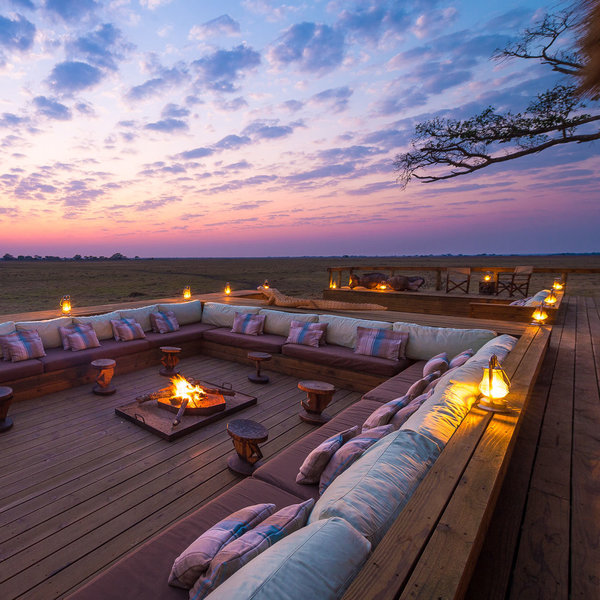
An inspiring use of sustainable management systems
Due to its off the beaten track location, Shumba Camp took a leap of faith by choosing to operate in this remote region. With a mission to expand the presence of eco-tourism all across Africa, the camp ensures that everything it does strictly follows the principles of sustainability. Shumba Camp’s dedication for eco-friendly management can be mostly seen in how the camp makes the best use of renewable resources.
To light up part of the camp, Shumba uses a hybrid system, whereby a diesel-powered generator charges a bank of batteries from where power is converted into electricity. Thanks to the use of batteries, the time the generator needs to operate to supply enough power is cut to only eight hours per day. Moreover, the camp is strict on using only energy-efficient lights and appliances. Additionally, each of the six tents has access to hot water thanks to their own small solar panel and inverter as well as a solar-powered geyser. In exchange, waste water is treated in an Above Ground Sewage Plant before going back into the soil.
All actions at Shumba Camp are strictly monitored against in-house environmental standards, which ensure that the camp is not willing to compromise when it comes to sustainable management, and therefore becomes a leading model of ecotourism in the area.
See more great sustainability projects in Zambia
Communications
- Power supply notes
- The rooms have plug points for charging batteries.
- Communications
- The camp uses radio coms between guides and the various camps in Kafue. Satelite phone and email is used to communicate with their main office in Lusaka. There is no cellphone coverage at Shumba Camp. However, they do have WiFi in the rooms with limited bandwidth (not in the main area). Keep in mind that in the bush, the WiFi isn't always 100% reliable.
- Water supply
- Borehole
- Water supply notes
- The indoor shower and toilet are plumbed in, while the outdoor shower is a bucket shower; apart from the family room which has a plumbed in outdoor shower.
Health & safety
- Malarial protection recommended
- Yes
- Medical care
- All the guides are trained in first aid. Air transfer to Lusaka can be arranged in an emergency.
- Dangerous animals
- High Risk
- Security measures
- Each room has a small safe to store valuables. Compressed-air alarms are provided in each room for guests to alert management in the case of an emergency.
- Fire safety
- Each room has a fire extinguisher which is regularly serviced and the team at Shumba are trained to use them. The camp also has a fire station with fire beaters, sandbags and extinguishers at the ready. Instructions of what to do in case of a fire are posted in each room.
Useful info
- Disabled access
- Not Possible
- Laundry facilities
- A laundry service is included here; they use a coal iron for pressing, so it's not recommended for anything delicate. Clothes are usually returned within 24 hours. It is possible to do a little handwashing for yourself as washing powder and a clothes line are provided in the tents.
- Accepted payment on location
- American dollars, GB pounds sterling, euro, South African rand and Zambian kwacha are all accepted forms of cash. Visa and Mastercard are also accepted at Shumba Camp on bills of greater than US$50, but note that there is a 3% surcharge.
Plan and book your trip with Expert Africa
All of our trips are tailor-made, so we'll always adapt them to suit you. Talk to an Expert and let us plan and arrange your perfect trip.

Talk to an Expert
Call or email us now! We’ll match you with the Specialist in our team who is best suited to help you. Then together we can start planning your trip.

Set up your itinerary
Based on our experience and your ideas, your specialist will create a detailed, costed itinerary. We’ll refine it together, until we have a trip that you’re perfectly happy with.

Prepare for your trip
The same Specialist will make the seamless arrangements for your trip, send you detailed travel documents, and be available to answer any questions before you depart.

Travel with peace of mind
After you set off, you’ll be cared for by our partners in Africa, most of whom have worked with Expert Africa for decades. And if you ever need us urgently, we’re available 24/7.

When you return
We love to learn about your trip, and so will always be grateful if you’ve the time to give feedback to your Specialist when you return.
Shumba Camp's location
Look closer at the environment and surroundings of Shumba Camp.
Other lodges in Kafue National Park
Alternative places to stay in this same area.
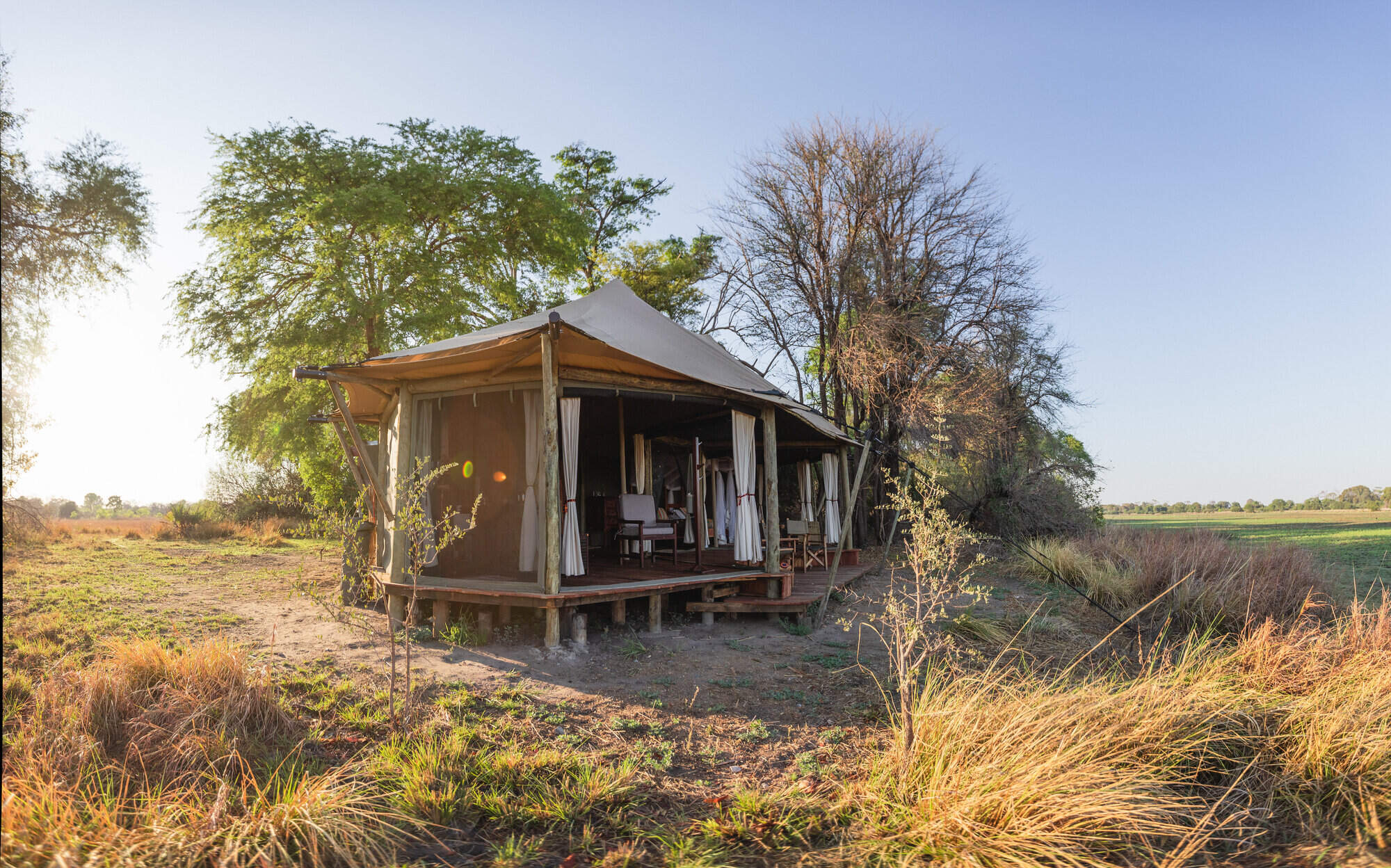
Musekese Camp
Musekese is a small owner-run tented camp, offering great guiding and a high degree of personal service in a stunning wilderness area, with modest game.
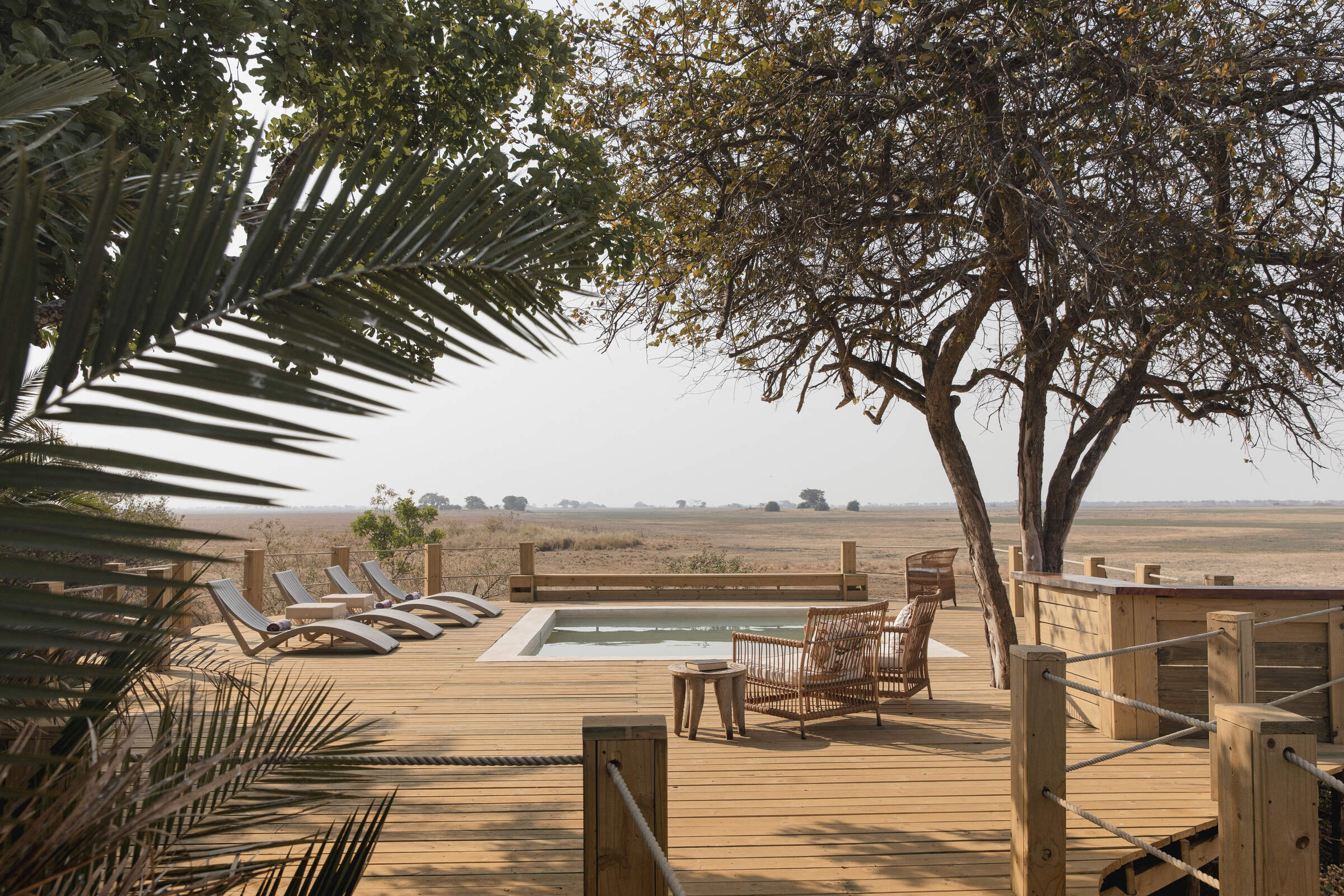
Busanga Bushcamp
Busanga Bushcamp is a small but comfortable tented bushcamp (max 8 guests) which makes a great base for a wildlife safari to the Busanga Plains.
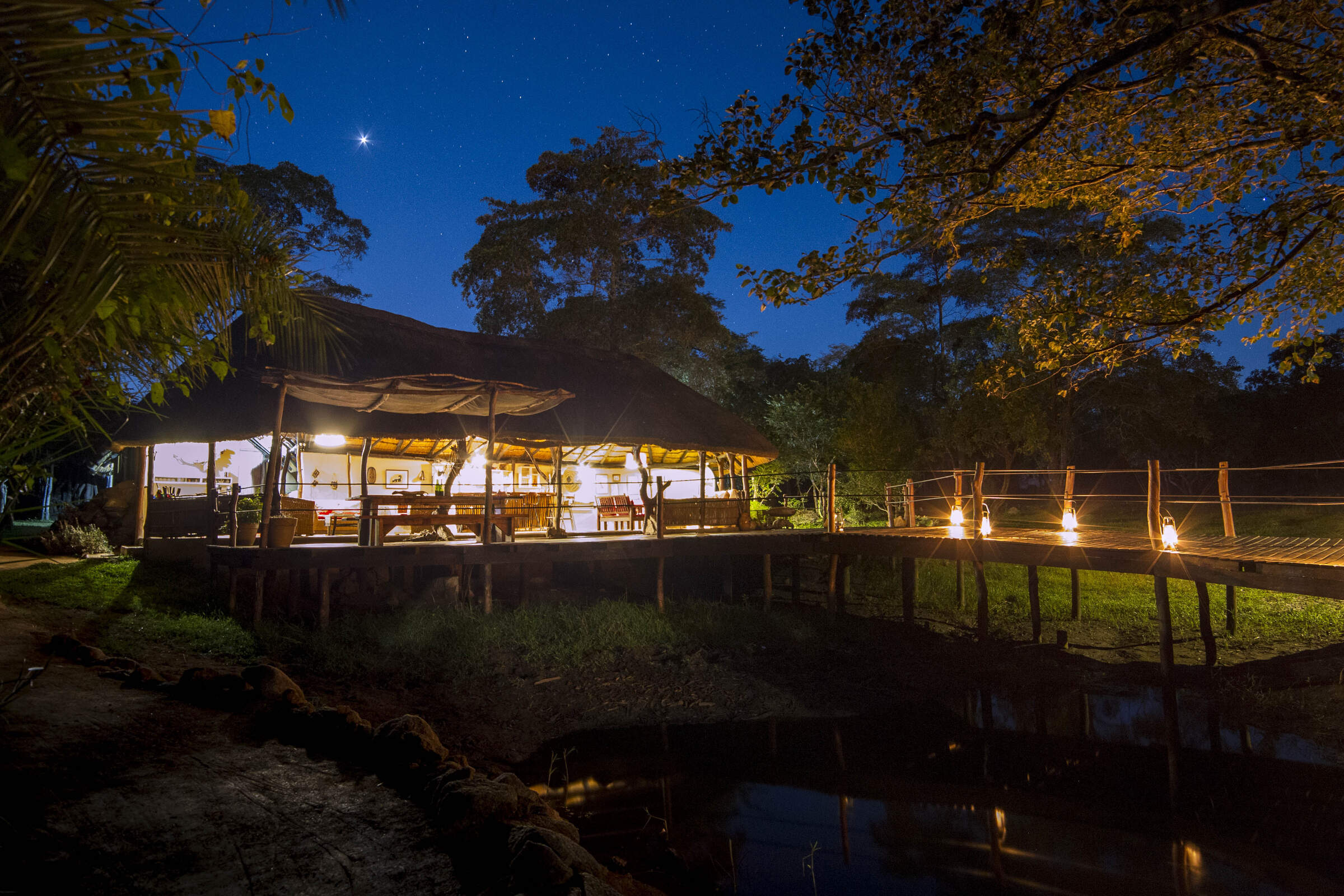
KaingU Lodge
KaingU Lodge, in the centre of the southern part of Zambia's vast Kafue National Park, is in a great location for exploring this section of the Kafue River
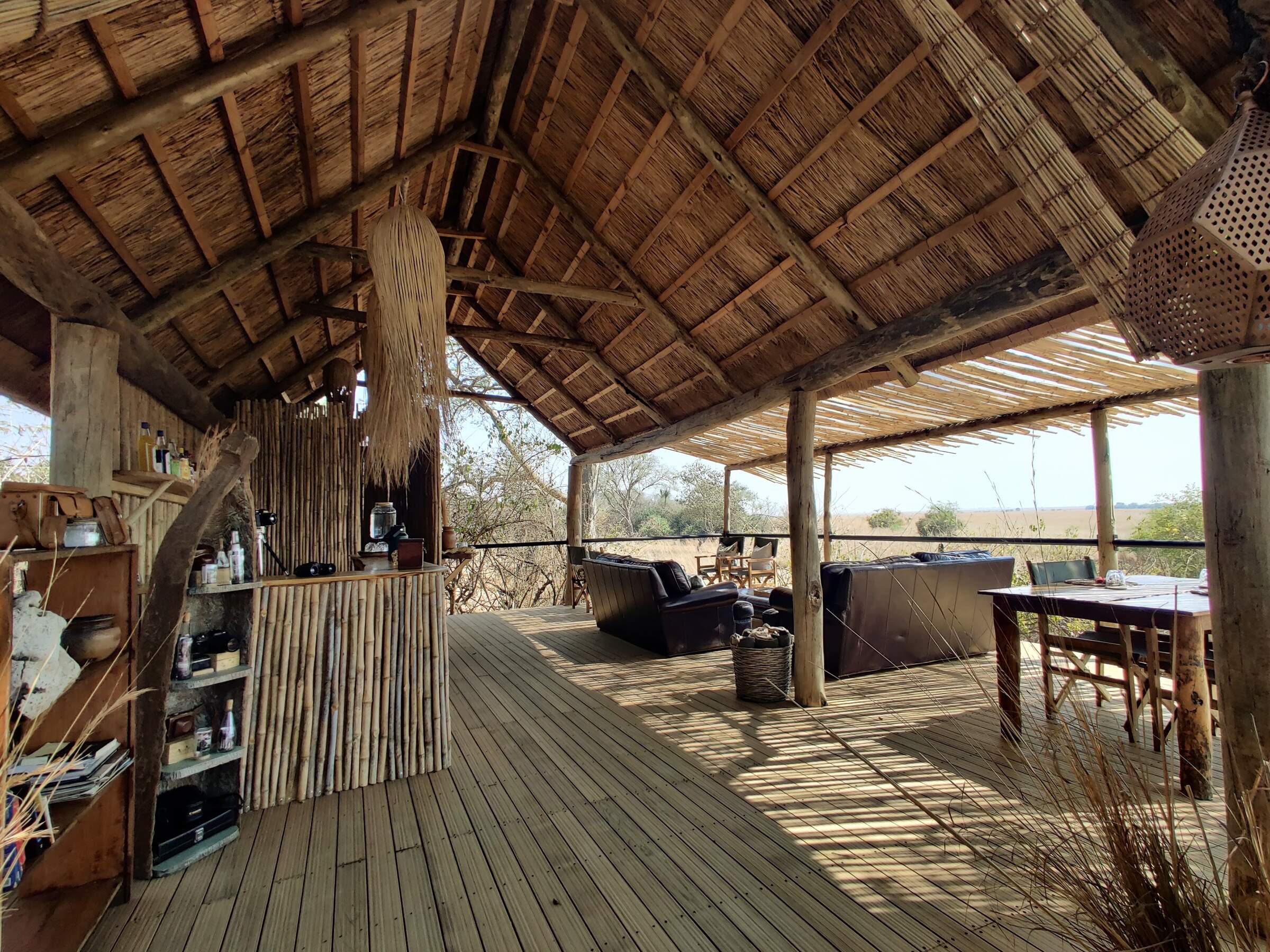
Ntemwa Busanga Camp
Ntemwa Busanga Camp is a simple but comfortable camp on the southern tip of the Busanga Plains which combines well with its sister camp, Musekese.
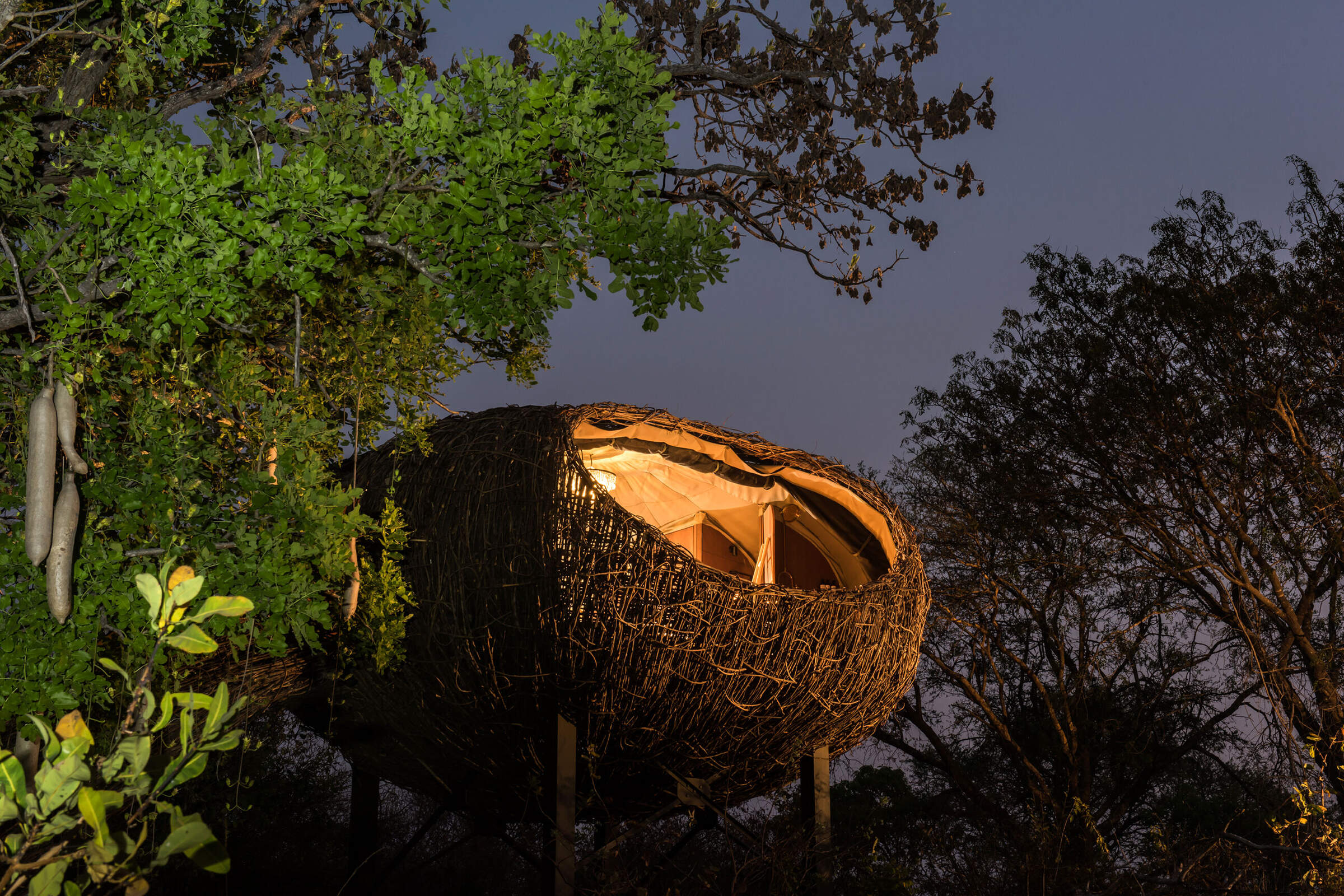
Chisa Busanga
Opened in mid 2021, Chisa Busanga Camp is a beautifully designed, small, intimate and rustic camp.
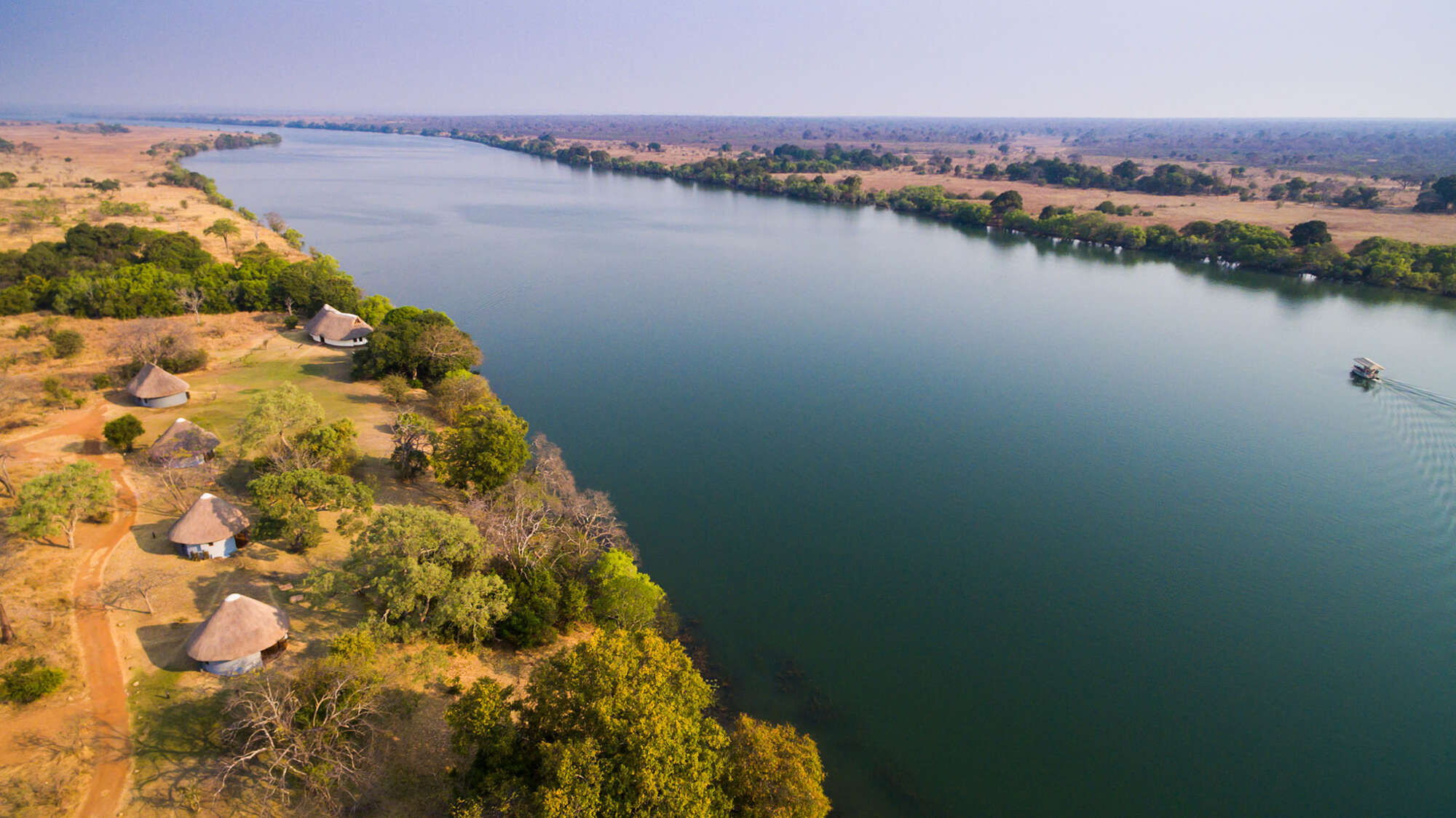
Mukambi Safari Lodge
Mukambi Safari Lodge is a solidly built, comfortable property just off the main road from Lusaka, making it one of the most convenient camps in Kafue.
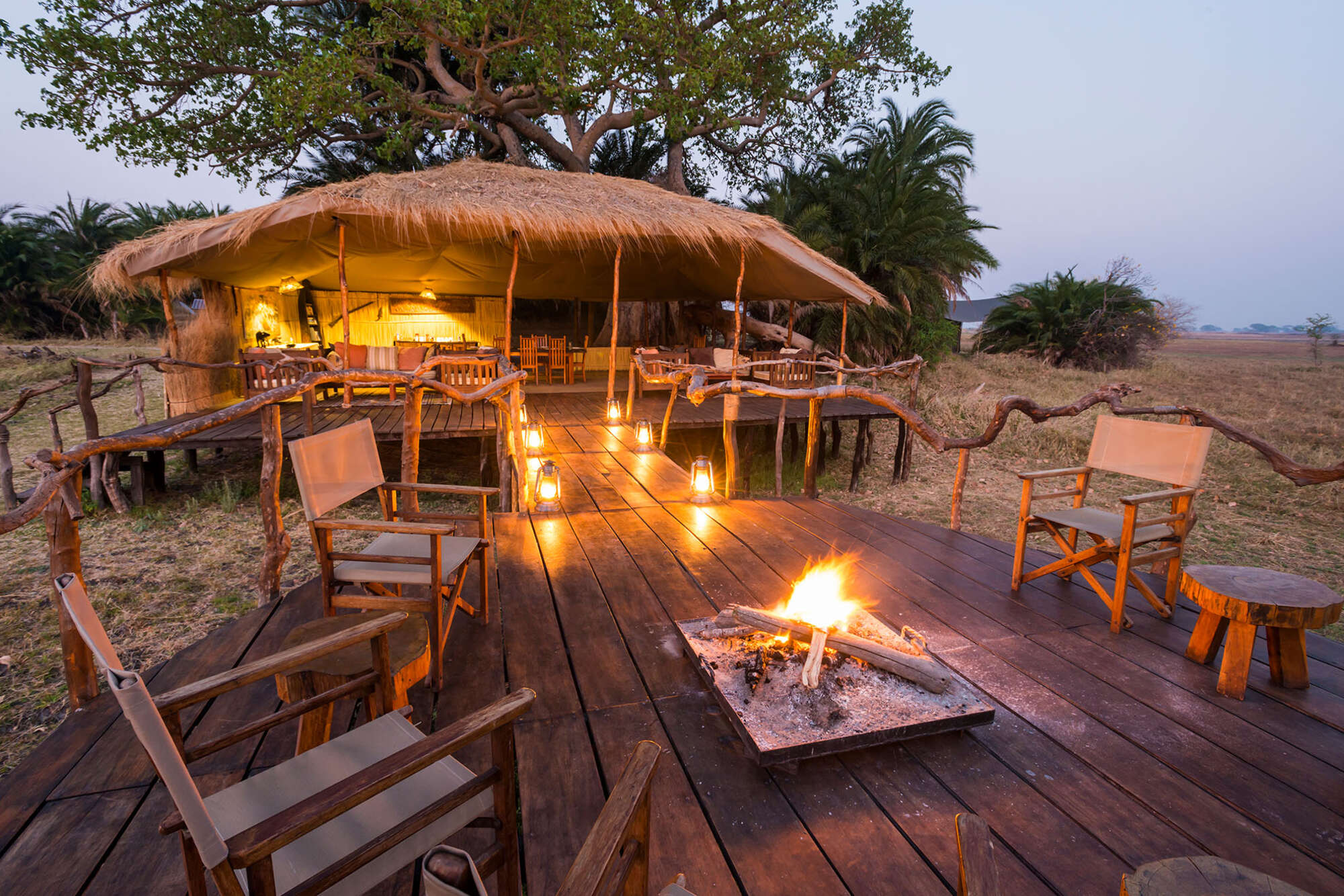
Mukambi Plains Camp
Mukambi Plains Camp is a rustic, tented property located in the middle of the vast Busanga Plains in Kafue National Park.
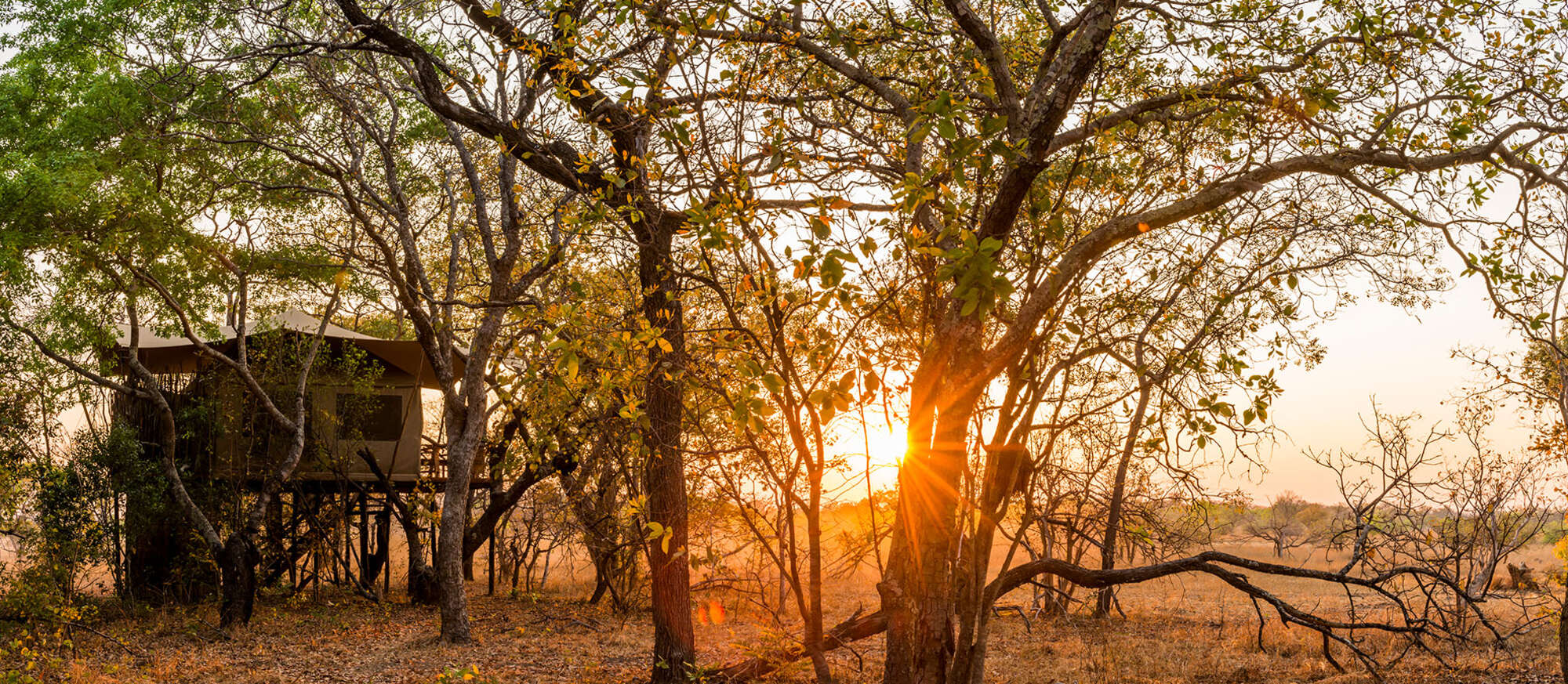
Fig Tree Camp
Fig Tree camp is in the centre of Kafue National Park, and in addition to having a stunning location is well placed to start or end your trip in the park.
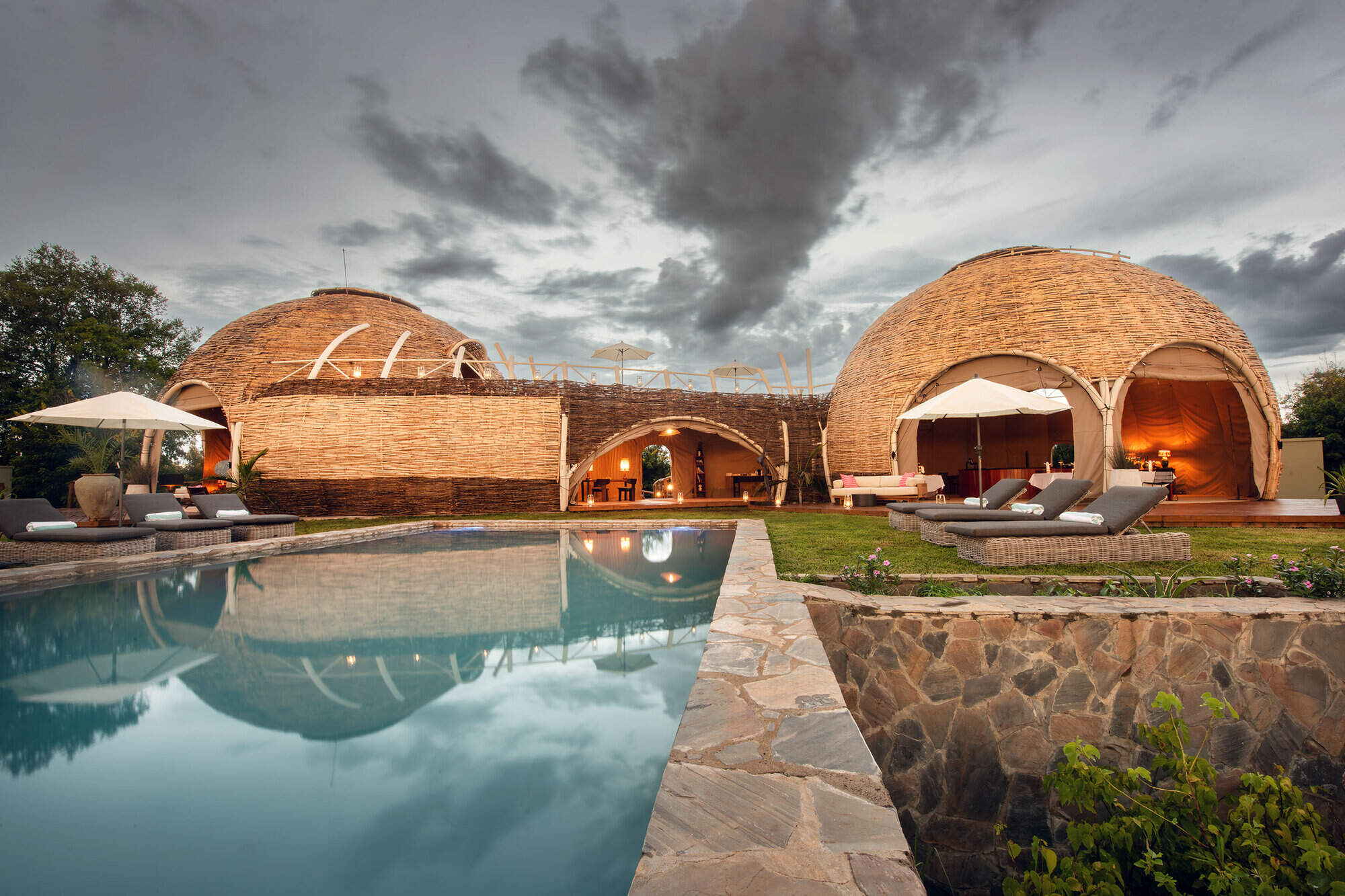
Ila Safari Lodge
Ila Safari Lodge is a comfortable lodge just outside Kafue National Park, with convenient access from Lusaka.
When to go to Kafue National Park
Our month by month guide: What it's like to visit Shumba Camp in Kafue National Park
Jan
Feb
Mar
Apr
May
Jun
Jul
Aug
Sep
Oct
Nov
Dec
Kafue National Park in January
January marks the peak of Kafue National Park's wet season. Expect frequent heavy downpours, often lasting for hours, punctuated by brief sunny intervals. The mercury soars above 30°C/86°F, accompanied by high humidity.
The park's landscapes are verdant and lush, with crystal-clear air. However, the abundance of water causes wildlife to disperse, and thick vegetation can hinder sightings. Migratory birds boost the park's avian diversity. Many areas of Kafue become inaccessible as seasonal rivers flood and dirt roads turn impassable. Only a few lodges, near all-weather roads in the centre of the park, remain operational. Visitor numbers are low, and accommodation options offer their most competitive rates.
- Wet season peak: frequent showers, steamy conditions
- Most lodges shut, verdant scenery ideal for photos
- Wildlife scattered, challenging to spot in thick foliage
- Minimal tourists, budget-friendly rates available
- Lush greenery dominates the landscape
Our view
This is not a great time to visit
Weather in January
Kafue National Park in February
February continues the wet season trend in Kafue National Park. Dramatic thunderstorms deliver brief but intense rainfall most days, interspersed with clear, sunny periods.
The park remains awash with water, dispersing wildlife and limiting access to certain areas. Dense vegetation restricts game viewing and walking safaris, but swollen rivers allow for unique boating experiences in some parts of the park. As the month progresses, water levels in the park's rivers begin to rise noticeably. The few operational camps continue to see low visitor numbers and offer reduced rates.
- Continued wet season: daily downpours, muggy atmosphere
- Majority of safari lodges and camps closed for the season
- Verdant surroundings, but wildlife sightings limited
- Rivers in flood and excellent for bird-watching
- Scarce visitors, economical pricing for adventurers
Our view
This is not a great time to visit
Weather in February
Kafue National Park in March
March signals the final month of Kafue's rainy season, with heavy showers still common. Water levels peak, making navigation within the park challenging. Daytime temperatures consistently exceed 30°C/86°F, with rain-induced humidity remaining high.
Most camps are still closed, and thick vegetation continues to limit wildlife viewing and walking safaris. However, this is a prime time for observing animals with their young, and predator activity can be high. The combination of clear air and increasingly frequent blue skies creates excellent conditions for photography. Birdwatching remains exceptional as migratory species prepare for their winter journey.
- Wet season climax: regular showers, high humidity
- Abundant newborns, but animals hard to spot in greenery
- Few tourists, low-season rates at lodges
- Lush vegetation persists across Kafue
- Most lodges remain closed
Our view
This is not a great time to visit
Weather in March
Kafue National Park in April
April marks a transition in Kafue National Park as the rains shift from intense downpours to lighter, sporadic showers. The landscape remains lush and green, but large wildlife sightings are still limited.
Most safari camps still remain closed; only those central camps near all-weather roads have reliable access. The park's rivers and wetlands are at their fullest, creating a picturesque setting. Despite improving conditions, game viewing can still be challenging due to the dense vegetation.
- Rainy season waning: occasional showers, humid days
- Many bush roads are still impassable
- Verdant scenery continues, wildlife viewing improving
- Most safari camps and lodges remain closed
- Low visitor numbers; attractive low-season rates
Our view
This is not a great time to visit
Weather in April
Kafue National Park in May
May typically heralds the start of the dry season in Kafue. While occasional showers may occur, most days are clear and sunny. As winter approaches, temperatures begin to drop, with daytime highs around 26°C/79°F.
The drying landscape improves access throughout the park, and some camps reopen – though access across the Busanga Plains remains challenging. Standing water is still prevalent, but game viewing noticeably improves as the vegetation thins. The month's end can be popular with visitors taking advantage of pleasant weather, better wildlife sightings, and the last of the low-season rates at many camps.
- Dry season onset: clearer skies, pleasant temperatures
- Many safari camp and lodges now operational
- Landscape still green, excellent for photographers
- Wildlife sightings improving as vegetation thins
- Final month for off-season lodge rates
Our view
A good time to visit, with pros & cons
Weather in May
Kafue National Park in June
June in Kafue National Park sees virtually no rainfall and a high likelihood of consistently sunny days. Humidity drops significantly, and winter's approach brings cooler temperatures, with nighttime lows around 10°C/50°F and daytime highs of 25°C/77°F.
The landscape remains relatively lush, but thinning vegetation greatly enhances visibility for game viewing. The park's rivers and wetlands start to recede, leading more wildlife to appear around the remaining water sources. Even the camps on the Busanga Plains are usually operational by June. Some still offer shoulder season rates, whilst others begin charging peak season prices.
- Consistently sunny days, cooler nights setting in
- All Kafue lodges open and welcoming visitors
- Wildlife viewing noticeably better, animals more visible
- Lovely conditions for walking safaris in Kafue
- Almost all tracks now passable, even on the Busanga Plains
Our view
A very good time to visit
Weather in June
Kafue National Park in July
As the dry season progresses in Kafue, vegetation continues to thin and water becomes scarcer. Wildlife begins to cluster around major water sources, improving game viewing opportunities.
July marks the heart of winter, with daytime temperatures in the 20s Celsius/70s Fahrenheit , but nighttime lows can drop to single digits. Early morning and late evening game drives can be particularly chilly, with camps often providing blankets and hot water bottles. Visitor numbers increase significantly, and popular small camps can fill up quickly. Properties now charge high season rates. The floodwaters in the Busanga Plains have receded to the north, opening up further areas for exploration.
- Warm days, chilly nights: bring layers for comfort
- Wildlife congregating near water sources, easier to spot
- Walking safaris popular, vegetation less dense
- End-July is the start of the busy season
- Lodge and camp rates now at peak season rates
Our view
A very good time to visit
Weather in July
Kafue National Park in August
By August, Kafue's vegetation has significantly thinned and wildlife congregates around remaining water sources, offering excellent game viewing opportunities. Rain is rare, with sunny days almost guaranteed, though dust and smoke can create a haze on the horizon.
Temperatures climb into the 20s Celsius/70s Fahrenheit the day, but dip below 5°C/40°F during nights which feel very cold. Warm clothing (hats and gloves!) is essential for morning and evening activities. One of the most popular months to visit Kafue so safari camps charge peak rates and availability can be limited, especially in sought-after locations.
- Very dry conditions, warm days but cold nights
- Excellent wildlife viewing
- Slight haze may affect long-distance photography
- Perfect weather for walking safaris in the park
- Peak season: lodges at high season rates
Our view
Fantastic: the very best time to visit
Weather in August
Kafue National Park in September
September is arguably the prime time to visit Kafue National Park. Rainfall is virtually non-existent, humidity is low, and temperatures begin to rise. Morning game drives become more comfortable with daytime highs typically in the low 30s Celsius/80s Fahrenheit; nights are less bitter.
Water scarcity concentrates wildlife around remaining sources, providing excellent viewing opportunities and increased chances of inter-species interactions. The wildlife on the Busanga Plains reaches its zenith as safari camps charging peak rates are often full – often having been booked up well in advance. A noticeable haze can affect distant views and photography.
- Dry, hot days with clear skies and mild nights
- Prime time for wildlife viewing in Kafue
- Often dense wildlife on the Busanga Plains
- Dusty conditions may create hazy landscapes
- High season continues, lodges often fully booked
Our view
Fantastic: the very best time to visit
Weather in September
Kafue National Park in October
October sees Kafue at its driest, with the landscape appearing barren and brown. Occasional showers may occur as the promise of the wet season looms. Temperatures can soar above 40°C/104°F during the day, rarely dropping below 20°C/68°F at night.
A smoky, dusty haze can be seen in distant photographs, even obscuring the horizon. The scarcity of water leads to great competition at remaining sources, with excellent opportunities to observe predator-prey interactions. Game viewing is at its peak, though the animals are feeling the stress of the dryness. Most smaller, more remote camps, and all of those on the Busanga Plains, close at the end of October.
- A prime month for wildlife viewing
- Lots of ‘fishing parties’ of birds feeding in drying pools.
- Very hot days and nights, rain unlikely
- Landscape increasingly dusty and harsh
- Hazy conditions may impact photography
Our view
A very good time to visit
Weather in October
Kafue National Park in November
November typically marks the transition from dry to wet season in Kafue – which makes this month unpredictable. Temperatures remain high and humidity builds until it rains. Spectacular thunderstorms then increase in in frequency later in the month, triggering rapid green growth.
Wildlife begins to disperse as water becomes more readily available. Increasing numbers of migratory birds arrive and antelope species gathering for calving. Most more remote camps are closed, including those on the Busanga Plains; camps remaining open reduce their rates. With the rains comes crystal-clear air – perfect photographic conditions.
- Transition from dry to wet season begins
- Wildlife viewing declines as animals disperse
- Landscape turns green, everything comes alive
- Clearer air means better photographic conditions
- Lodge rates decrease; most safari camps close
Our view
A good time to visit, with pros & cons
Weather in November
Kafue National Park in December
December usually sees Kafue fully in the grip of the wet season. Heavy thunderstorms occur on most days, interspersed with sunny periods. Temperatures begin to drop but still exceed 30°C/86°F during the day, accompanied by high humidity.
The rainfall transforms the landscape, encouraging lush vegetation growth. While wildlife remains in the park, sightings become more challenging due to the thick foliage and dispersed animal populations. Many areas become difficult to access, and all but a few centrally located camps close for the season. Open camps offer their lowest rates. The rains clear the air, restoring vivid blue skies that delight photographers.
- Rainy season in full swing: hot, humid, wet days
- Wildlife harder to spot as vegetation thickens
- Many Kafue lodges close; others offer low-season rates
- Green landscape and clear air perfect for photography
- Many birds in breeding plumage
Our view
This is not a great time to visit
Weather in December

Looking for inspiration on where to travel next?
Visit our trip chooser to explore your options and find inspiration for your perfect African adventure
Inspire me